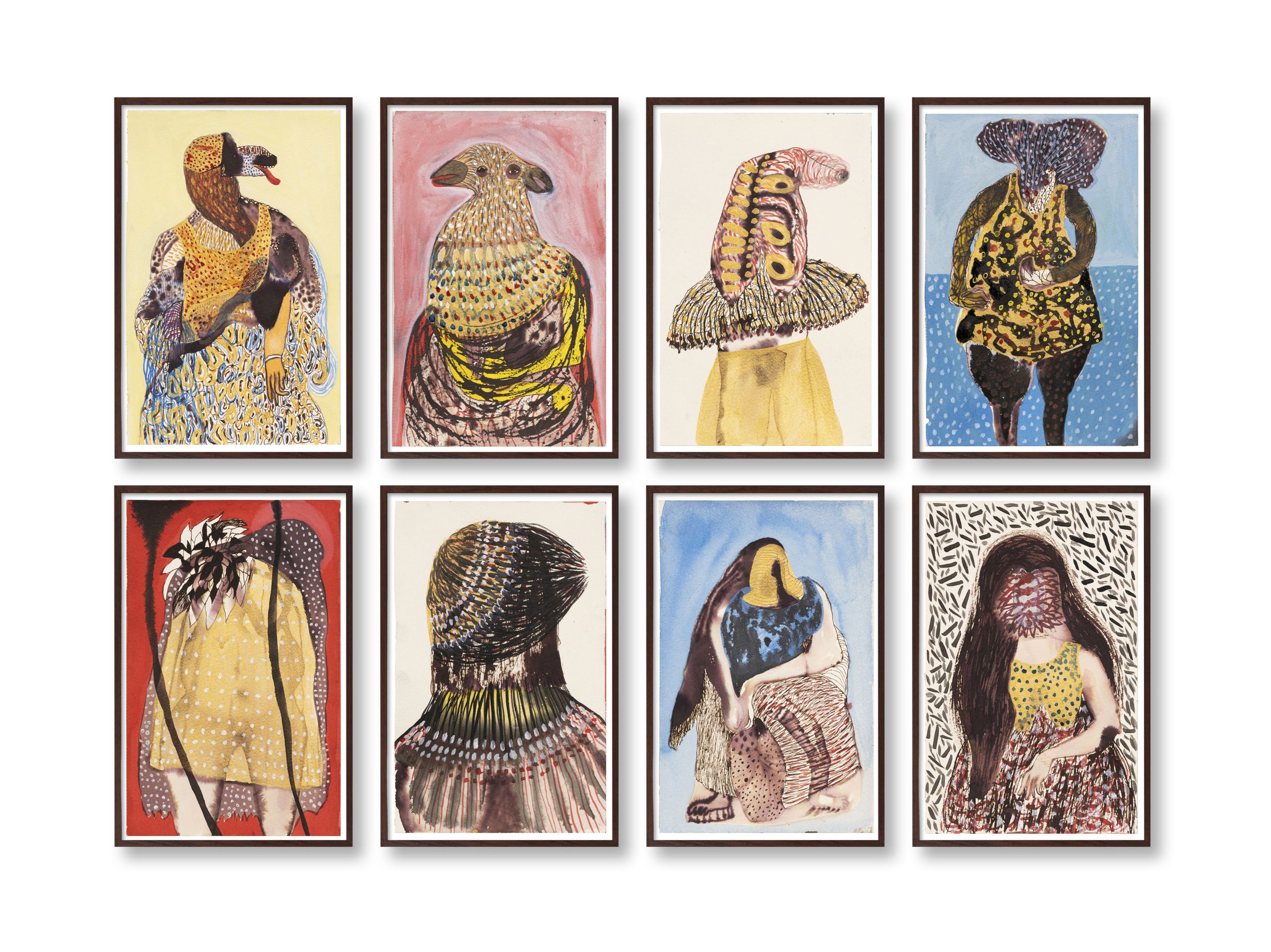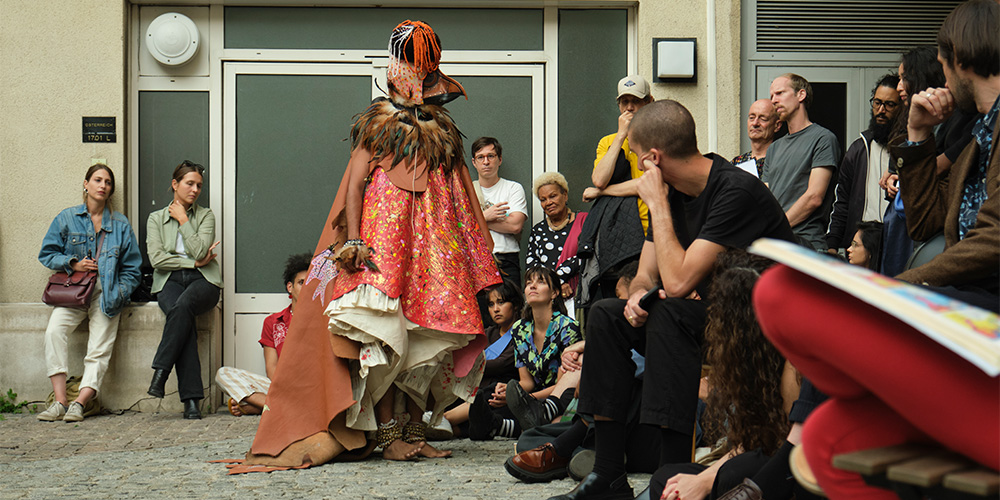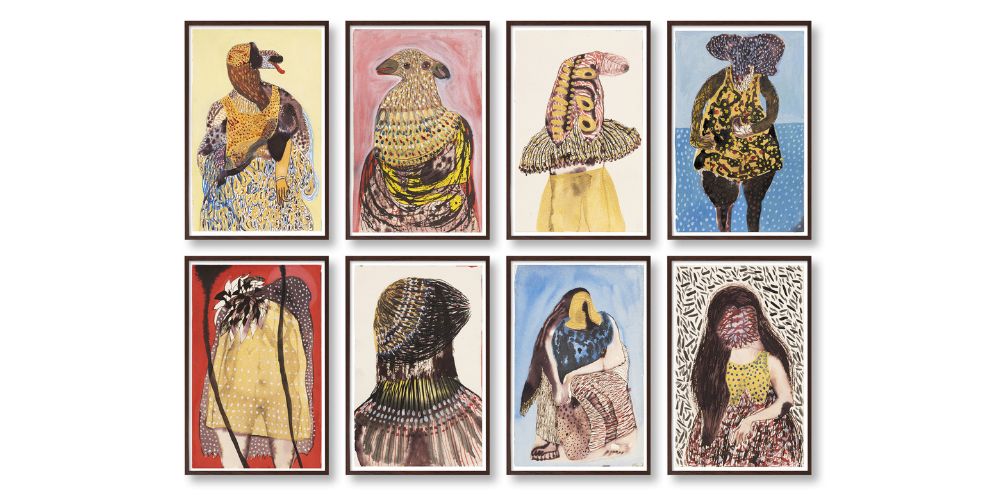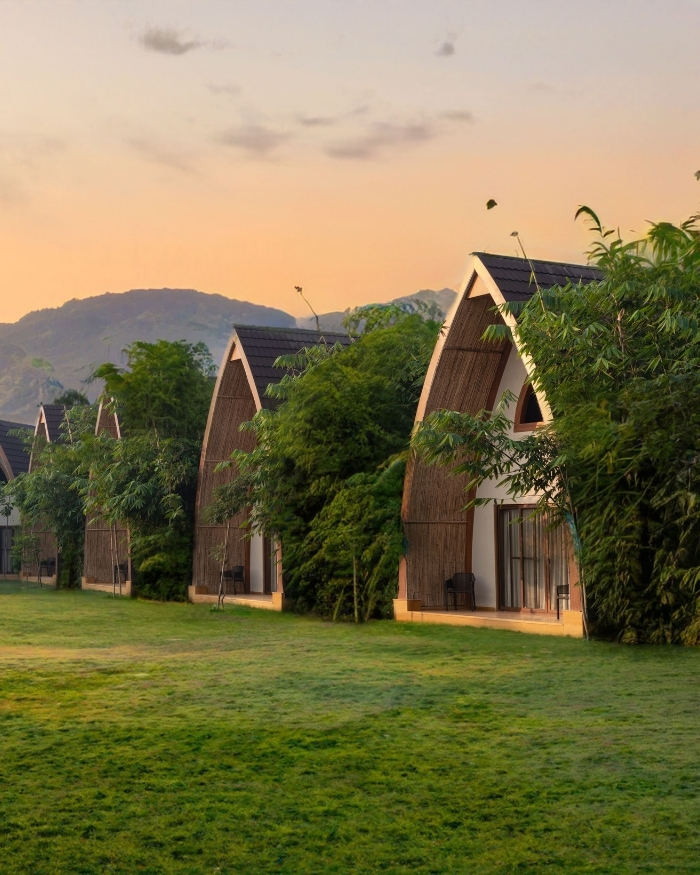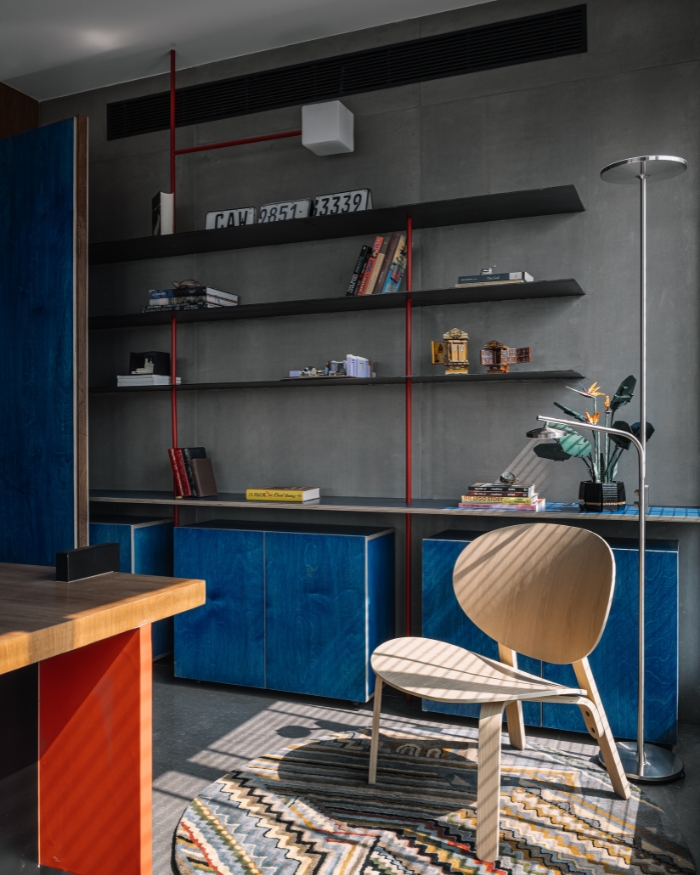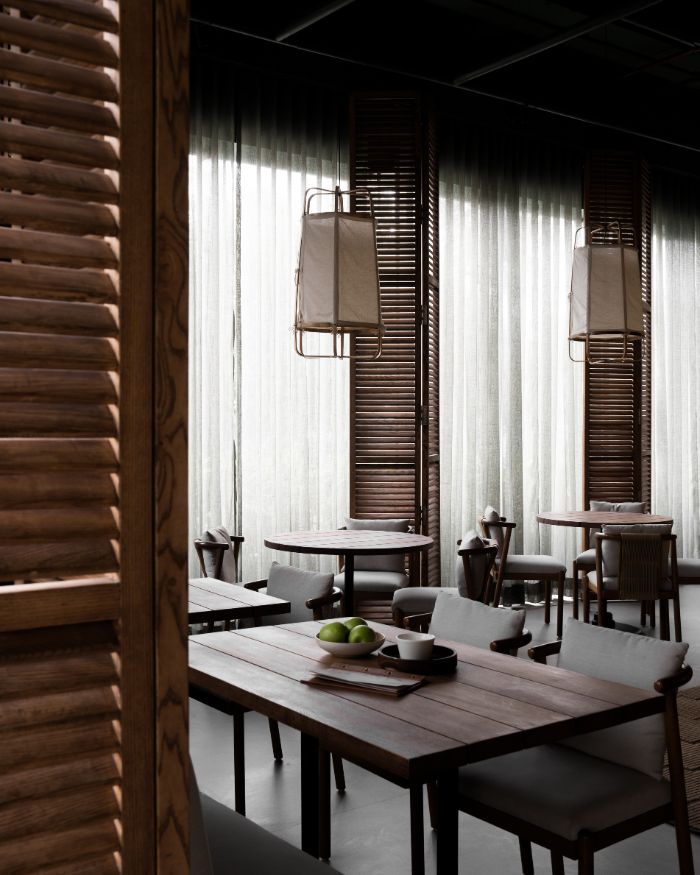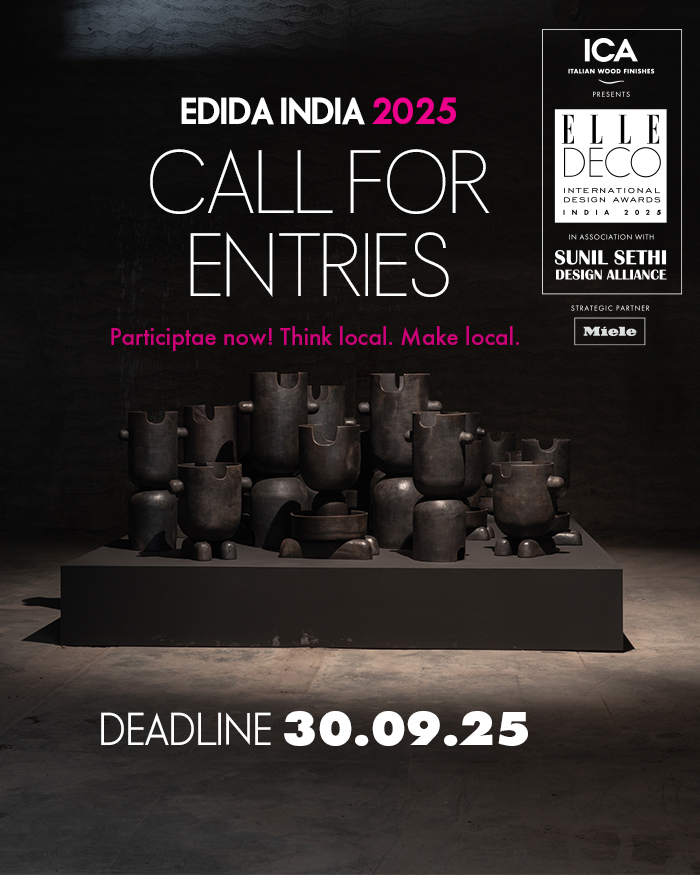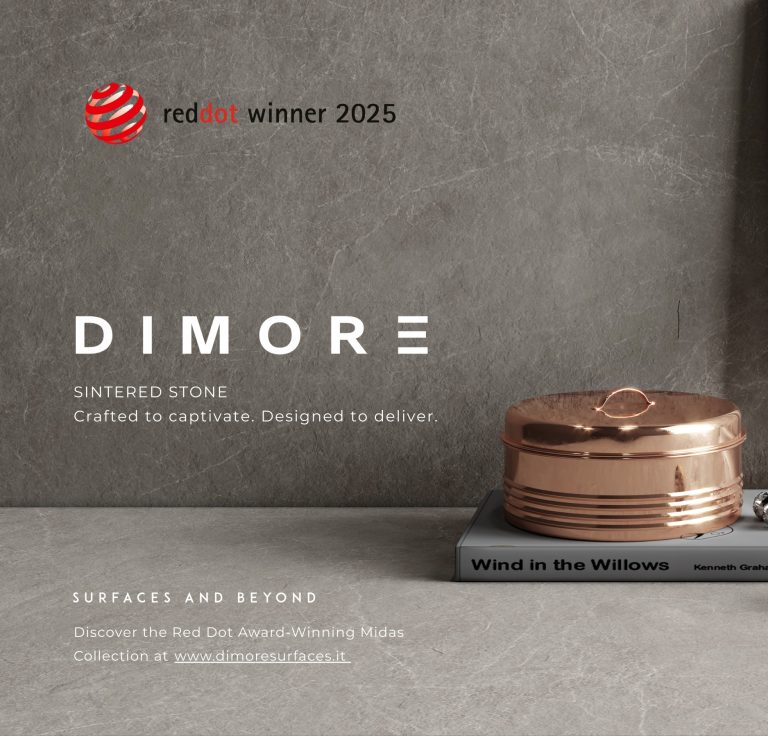- “Where are you from?” If there is one question that you can ask someone who has moved cities that will almost guarantee a long heavy sigh followed by an even longer soliloquy, it would be this. As someone who hails from Kolkata and subsequently forayed to the “big cities” of Bengaluru and now, Mumbai, I am no stranger to this question nor the cultural milieu arising from disparate geographical roots.
While this heterogeneity was all too familiar as I landed at the Dubai airport, the glimmering world outside was more akin to a science fiction fantasy. Forged in the same ambition and hope that characterise the urban centres I have lived in, the parallels are glaringly apparent. Cities of dreams. Maximum cities. Cities built by people who carry memories from another land. Dubai, therefore, makes for an intriguing case study to explore the Global South state of mind. For over close to two decades, Art Dubai has done just that, sparking a discourse through artistic inquiry in the Middle East and beyond.
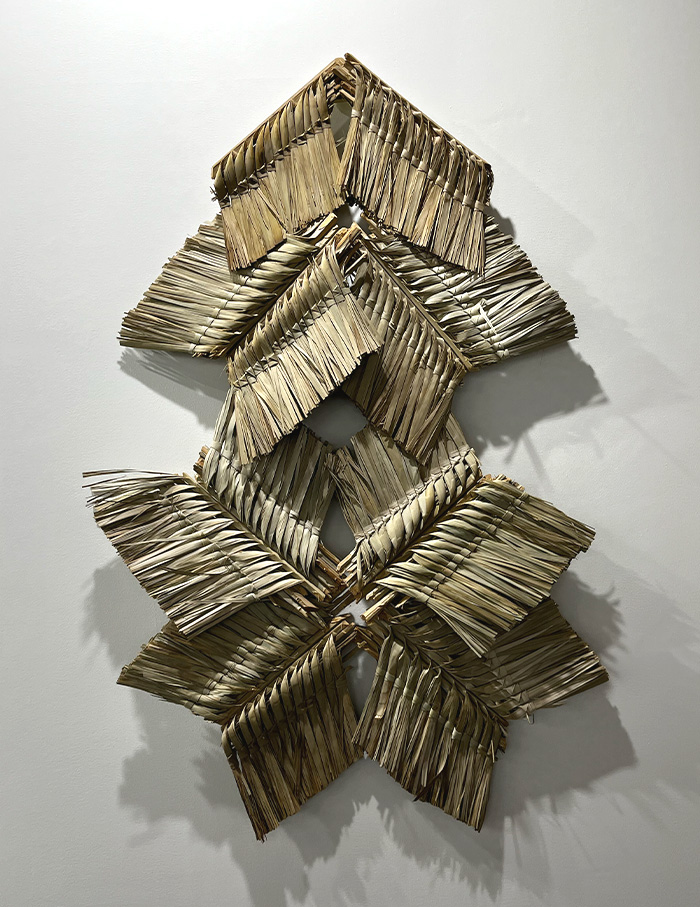
But what is the Global South?
“You’re Indian. Put your hand next to mine,” insists the Spanish artistic director of the fair, Pablo del Val, in the midst of a fervent explanation. “We believe in different things. We understand life in different ways.” This rings especially true in a city like Dubai where most of the population are expatriates. “In Dubai, we’re all migrants. We’re all displaced people,” he continues, elaborating how this condition defines the Global South. Through contemporary art, Pablo and Art Dubai have initiated dialogues and investigated complex subjects that would be near impossible through traditional forums — such is the power of creative expression.

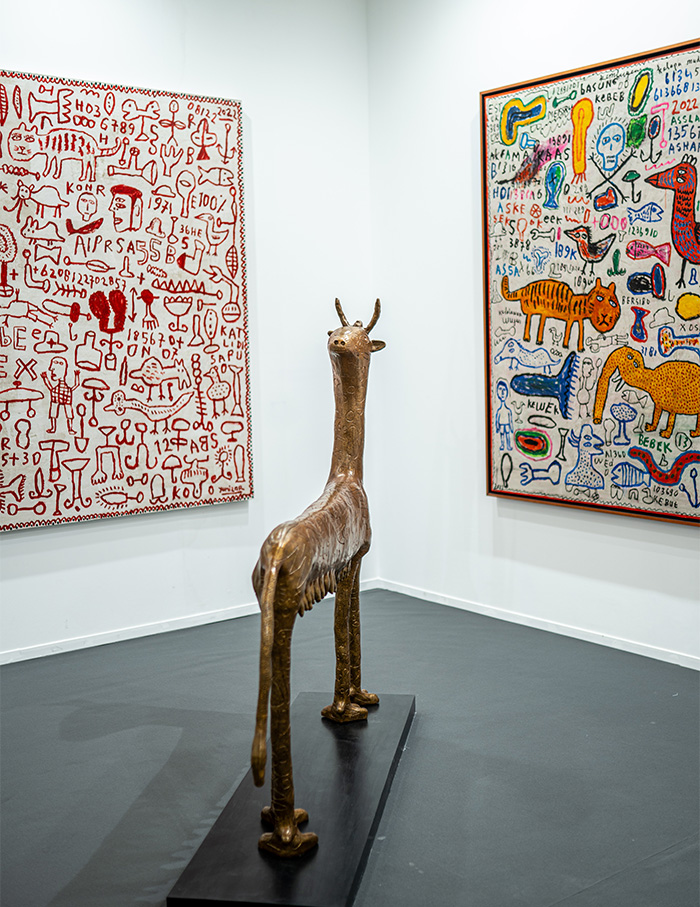
Healing, art and the immigrant experience
Stemming from this reality is one of the central themes of the fair — healing or Sanación in Spanish. “Sanación is like how we heal everything. Our insides, our heads, our feelings, our hatred, our fears,” Pablo states. With over 120 galleries presenting artworks from over 40 countries, Art Dubai offers four sections: Contemporary, Bawwaba, Art Dubai Modern and Art Dubai Digital. Interestingly, the lion’s share of the galleries belong to regions of the Global South. But what does it mean to be a native of this land? “An Emirati artist is not only the one that has a passport but one who is living here,” claims the artistic director, with a deeper dive into the history of the Gulf city revealing how the historic patterns of migration have informed the urban culture.

From behind the screen
But what makes culture? For someone who has grown up as what Internetspeak labels as “chronically online”, the meaning of the term for my generation extends beyond the material sphere. Through the framework of Expansion / Diffusion, curators of Art Dubai Digital Auronda Scalera and Alfredo Cramerotti, co-directors of Multiplicity-XXnft and Web to Verse, scout creations that explore a reality that is more than just physical.
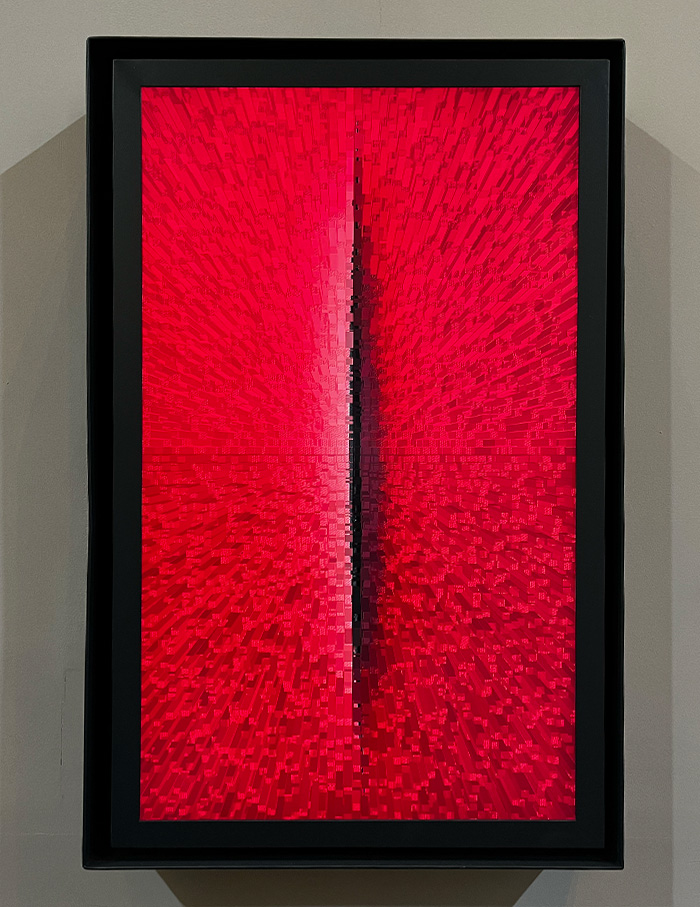
At one of the booths, Italian creative Matteo Mandelli attempts to break the glass barrier and peer into the world behind. Alas, once he cracks open the surface, the spell vaporises, leaving behind glitching imagery. Is culture not relevant when it is virtual?
Looty, a design and art practice based in London, takes this concept and embarks on a mission to return African art locked in foreign nations to the motherland, the artists 3D scan the objects from the British Museum and virtually place them in their original context, calling it the “first act of repatriation”. In a moment of playful yet profound exasperation, he proclaims, “We’re here to reclaim stolen art from the Global South, India, Brazil, Chile, anywhere!”

From the individual to the collective
Wading through the host of thought-provoking works of art, I could see what Pablo meant by the Global South sharing roots of similar cultural frescoes. Next to a collective of Indian artists represented by Exhibit 320, is the work of Emirati multi-media creative Alia H. Lootah from the Aisha Alabbar Gallery. The former showcases the textile-based artefacts that are an ode to women’s unsung contribution to traditional artistry. At the same time, Alia draws inspiration from her everyday life and explores the dissonant temporal experiences of a young mother. However, Indian artist Sajan Mani took a different approach. His tongue-in-cheek performance art piece Just Relax invites the audience to engage in, what he calls “political yoga”. Using humour and satire as tools of disruption, he challenges the idea of healing — viewing it as an opportunity to question the status quo.
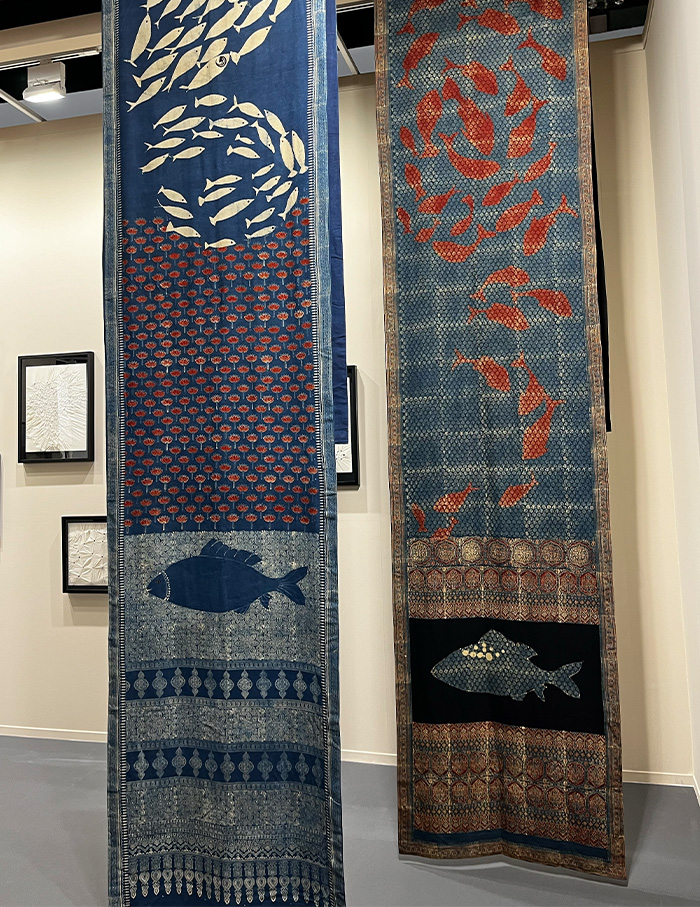
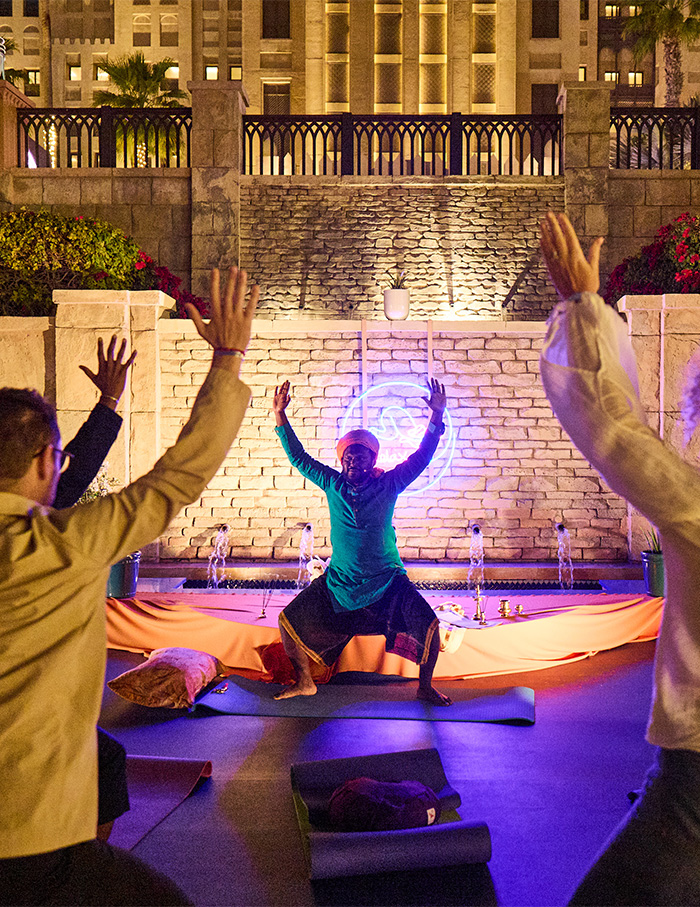
“I have seen the hands that have built all this,” muses Sajan, sitting on the steps in front of his performance area with a monumental stone backdrop. Having been a construction worker (a considerable percentage of the transient population in the Middle East) he is acutely aware of the networks of worlds that run underneath the dazzling city. Through cues of familiar smells, forms and collective memory, Art Dubai celebrates the legacy of stories from trade to migration to the tacit knowledge that informs this larger-than-life metropolis moulded by aspiration and desire.
You may also like: Luxury without limits: 48 hours inside Atlantis The Royal in Dubai reveals fluent dynamics of indulgence

